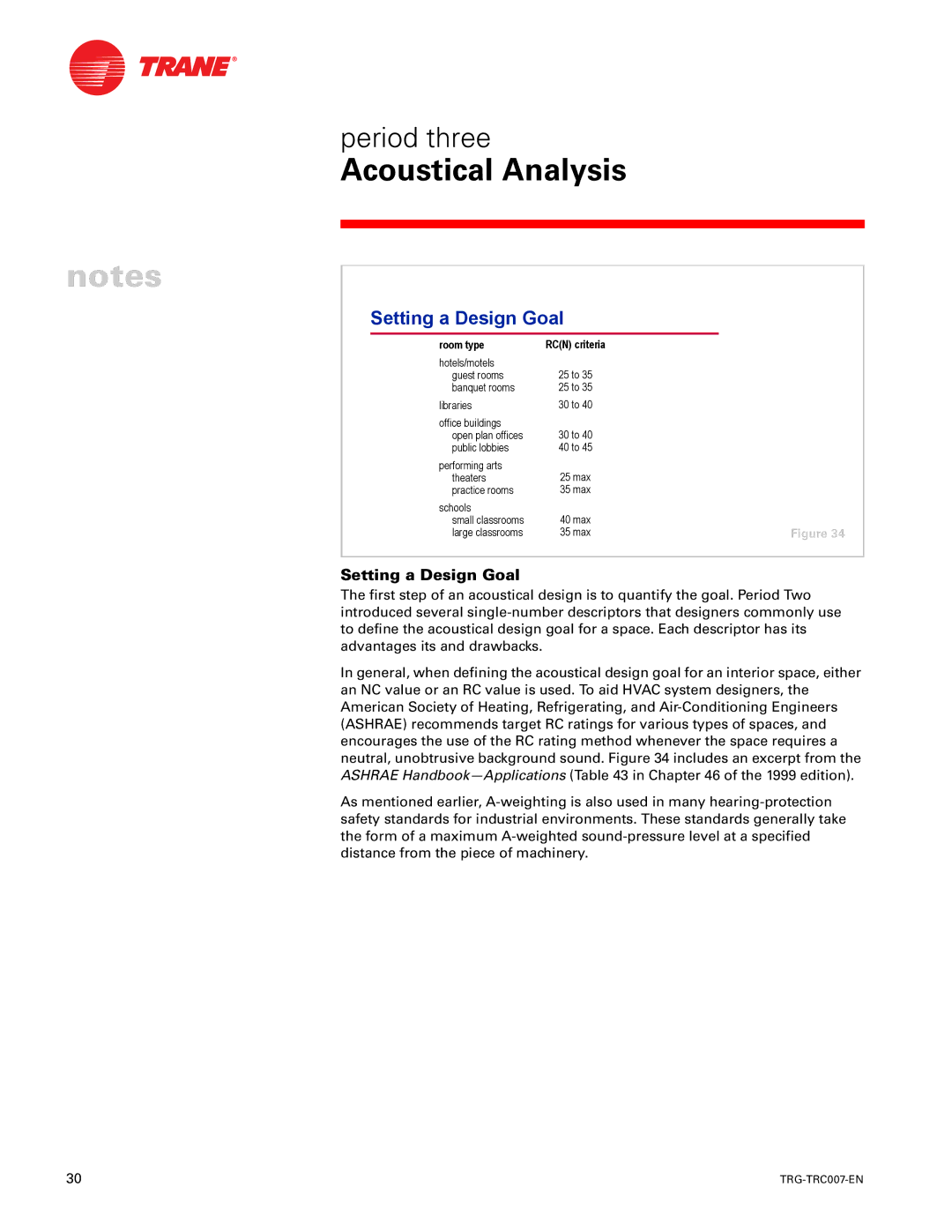
period three
Acoustical Analysis
notes
Setting a Design Goal
room type | RC(N) criteria |
|
hotels/motels | 25 to 35 |
|
guest rooms |
| |
banquet rooms | 25 to 35 |
|
libraries | 30 to 40 |
|
office buildings | 30 to 40 |
|
open plan offices |
| |
public lobbies | 40 to 45 |
|
performing arts | 25 max |
|
theaters |
| |
practice rooms | 35 max |
|
schools | 40 max |
|
small classrooms |
| |
large classrooms | 35 max | Figure 34 |
Setting a Design Goal
The first step of an acoustical design is to quantify the goal. Period Two introduced several
In general, when defining the acoustical design goal for an interior space, either an NC value or an RC value is used. To aid HVAC system designers, the American Society of Heating, Refrigerating, and
As mentioned earlier,
30 |
|
